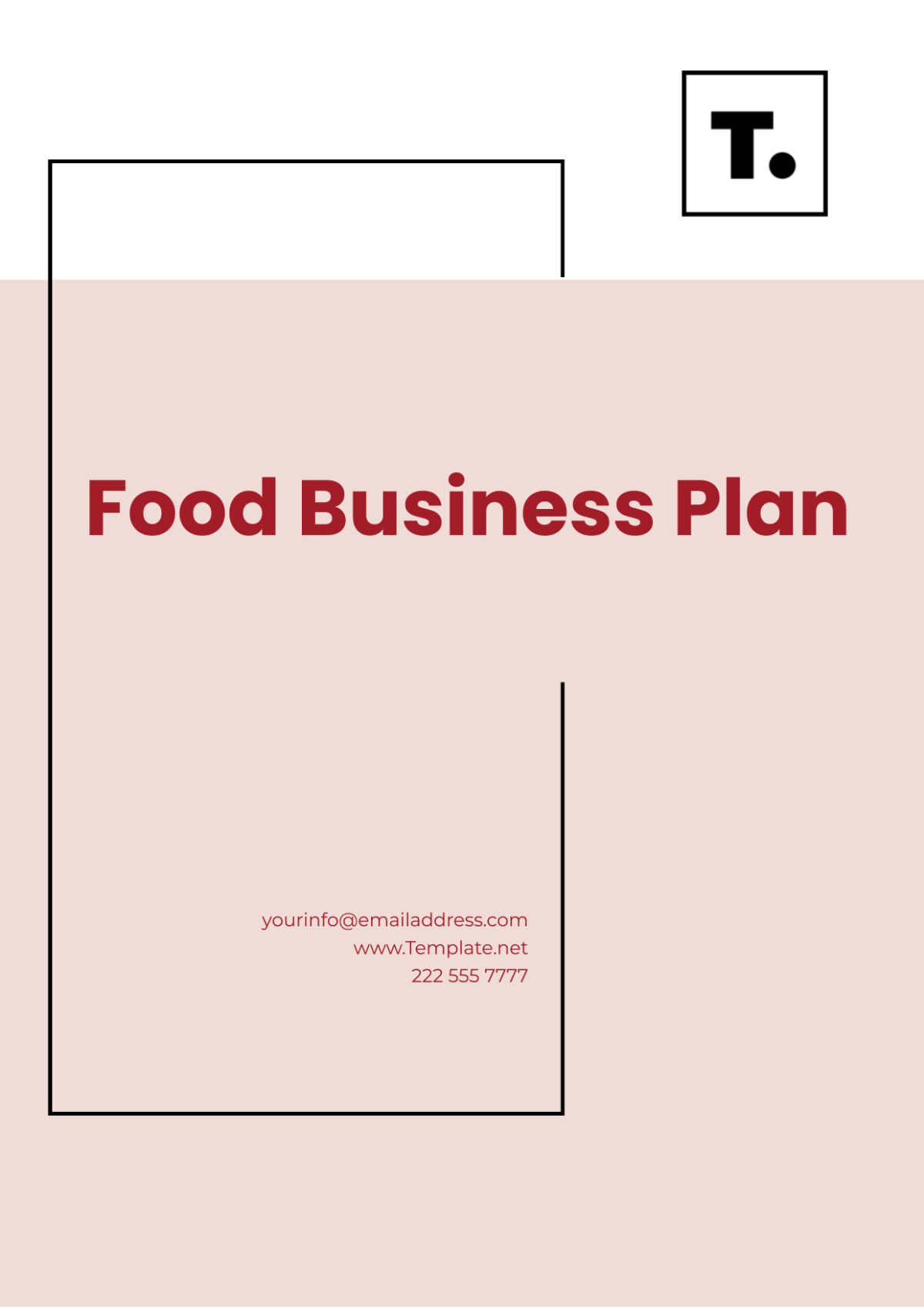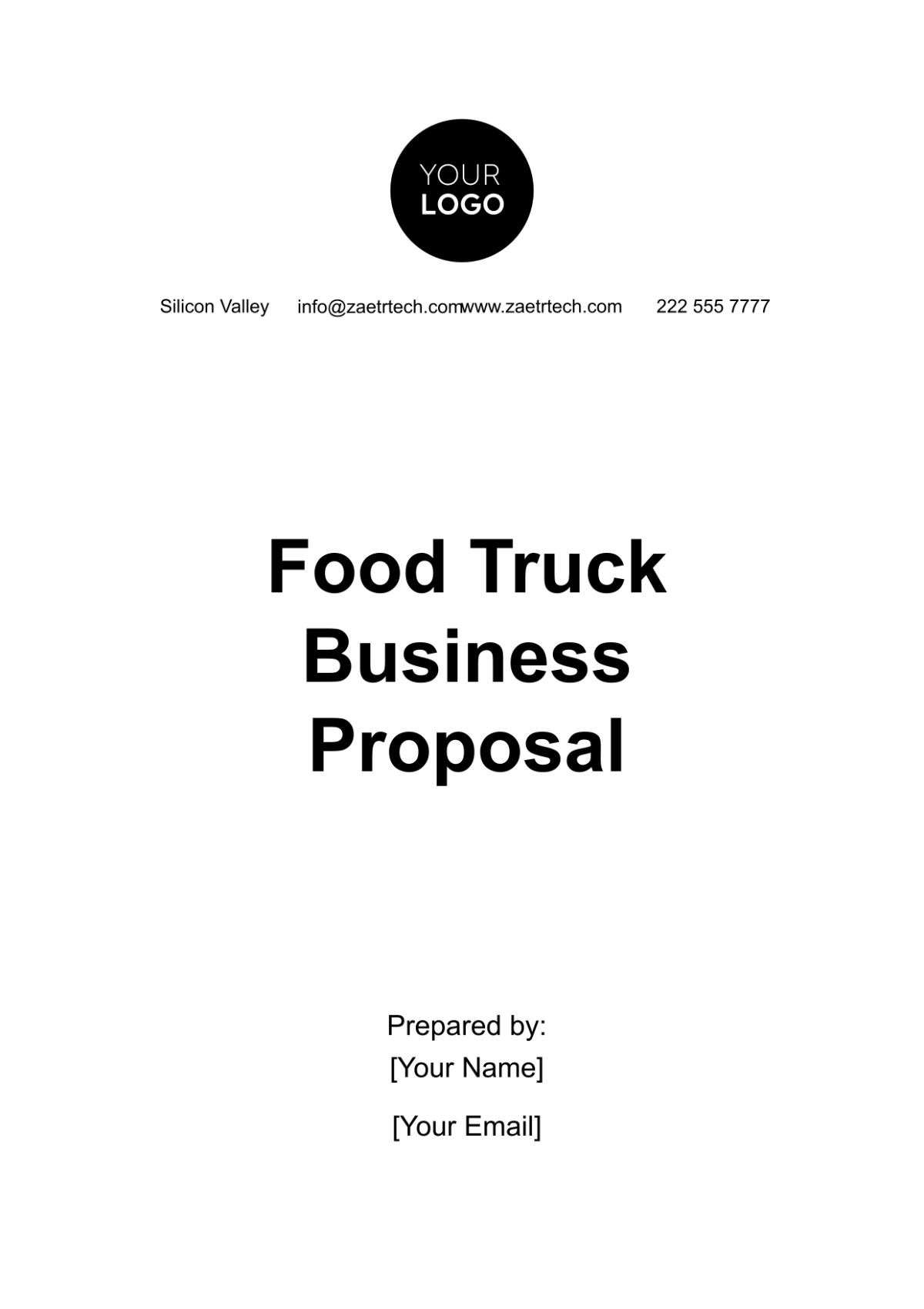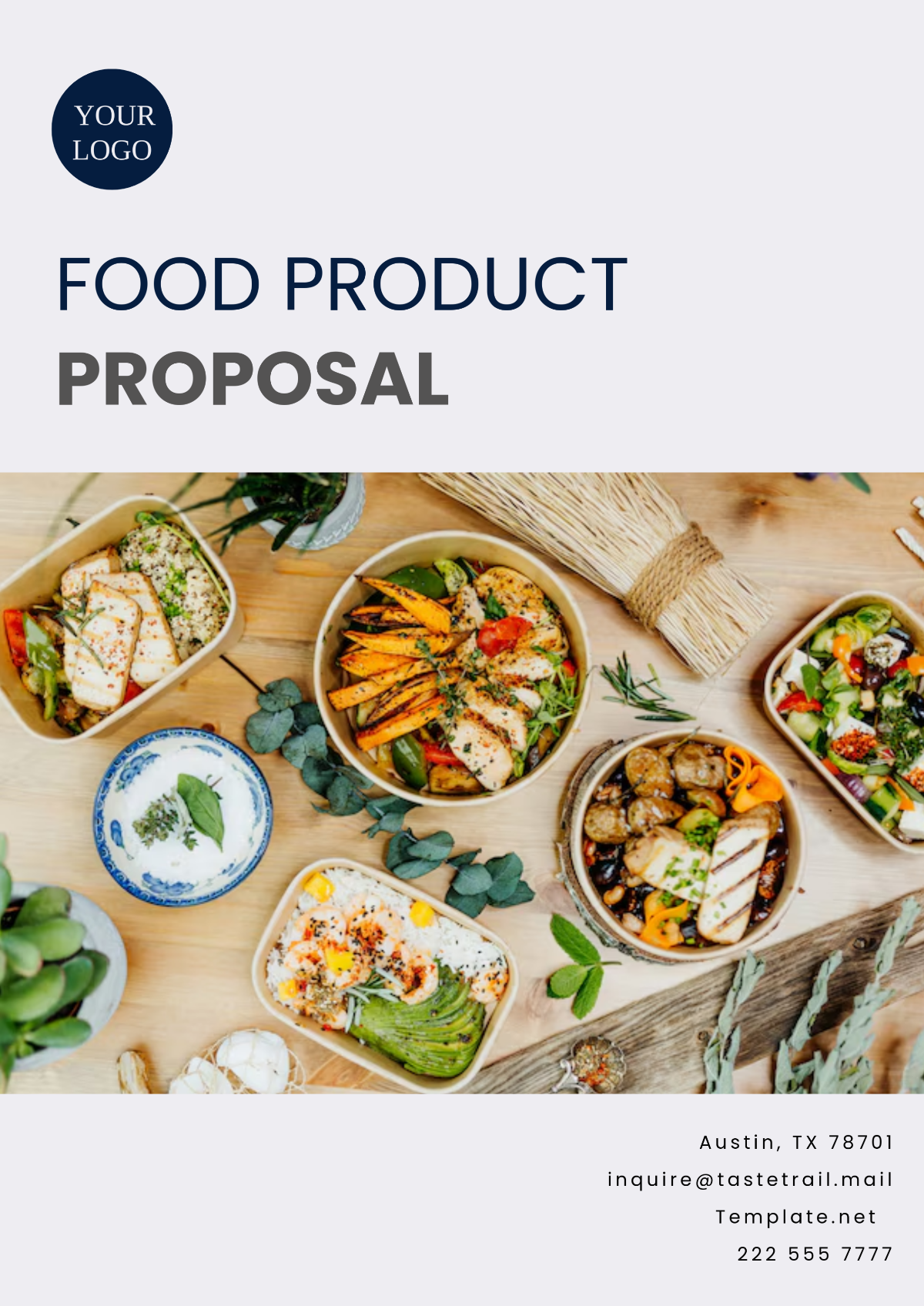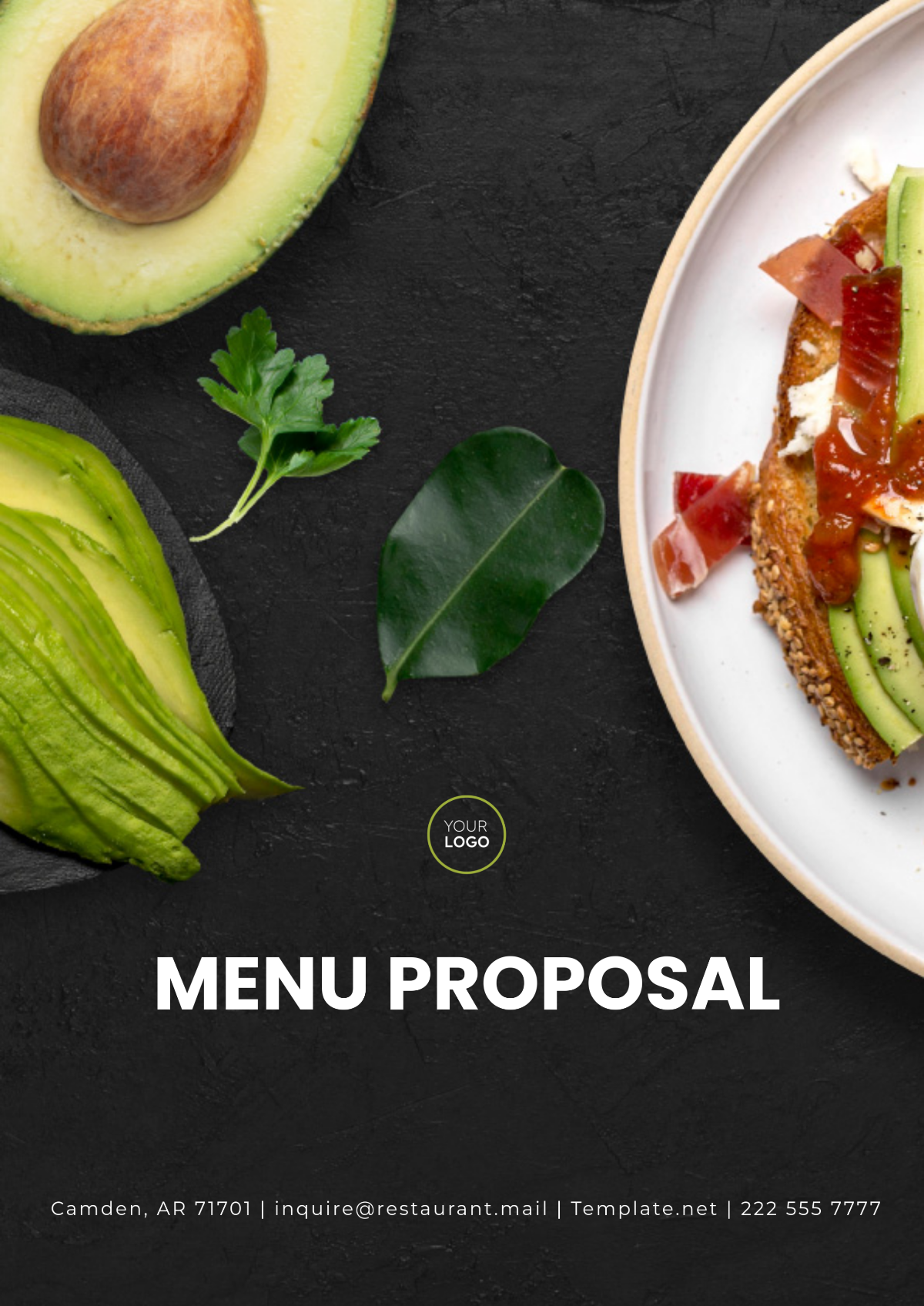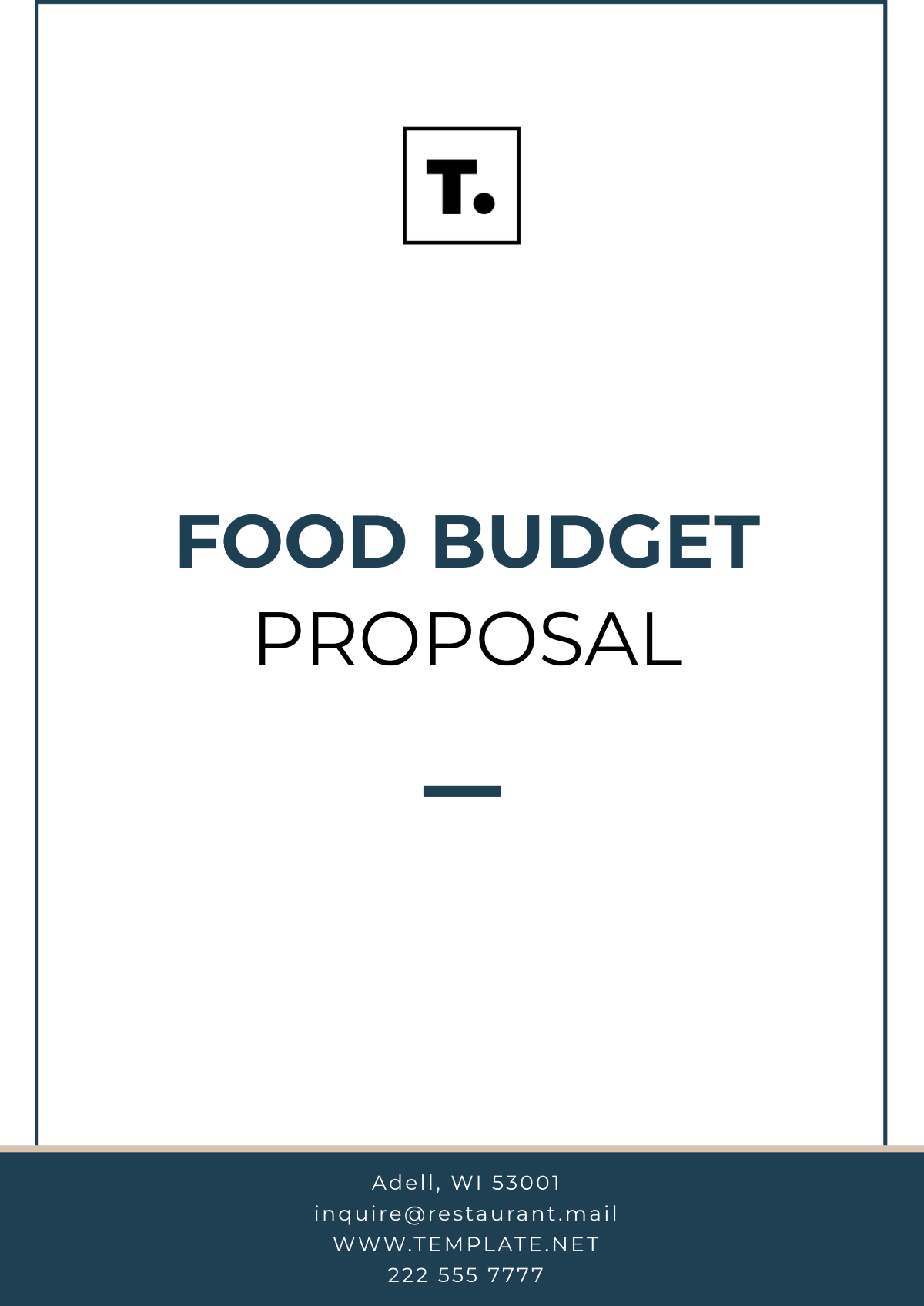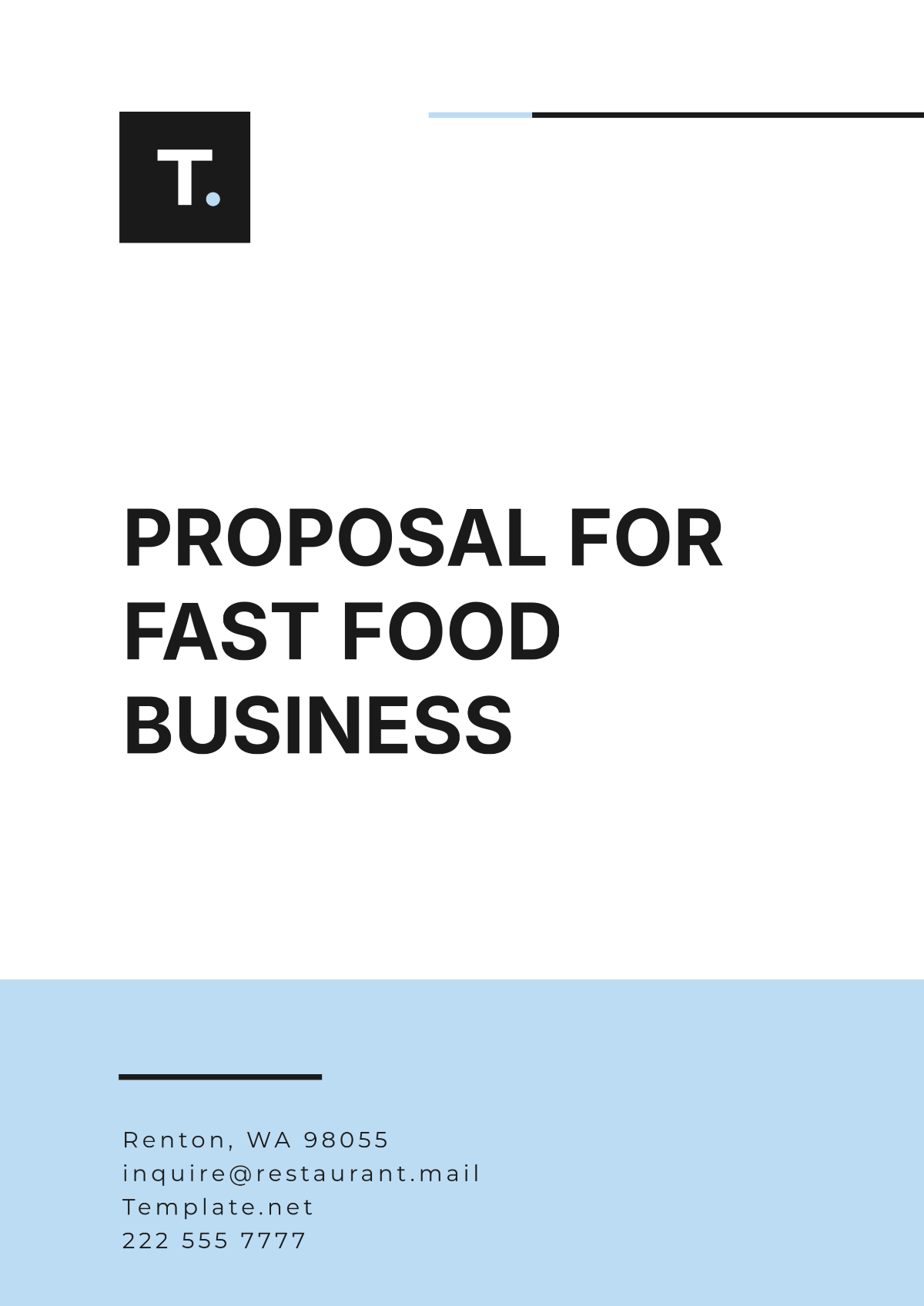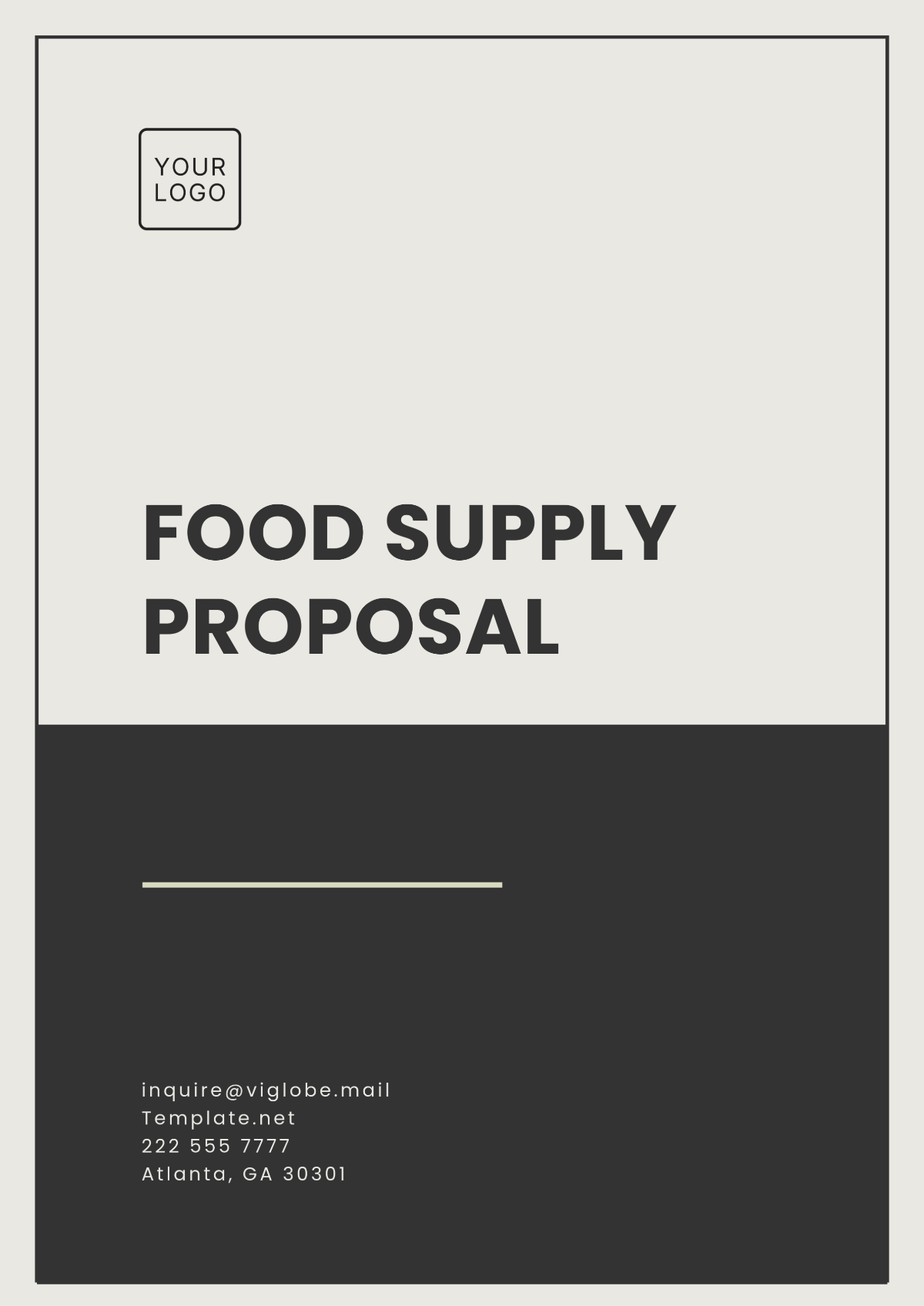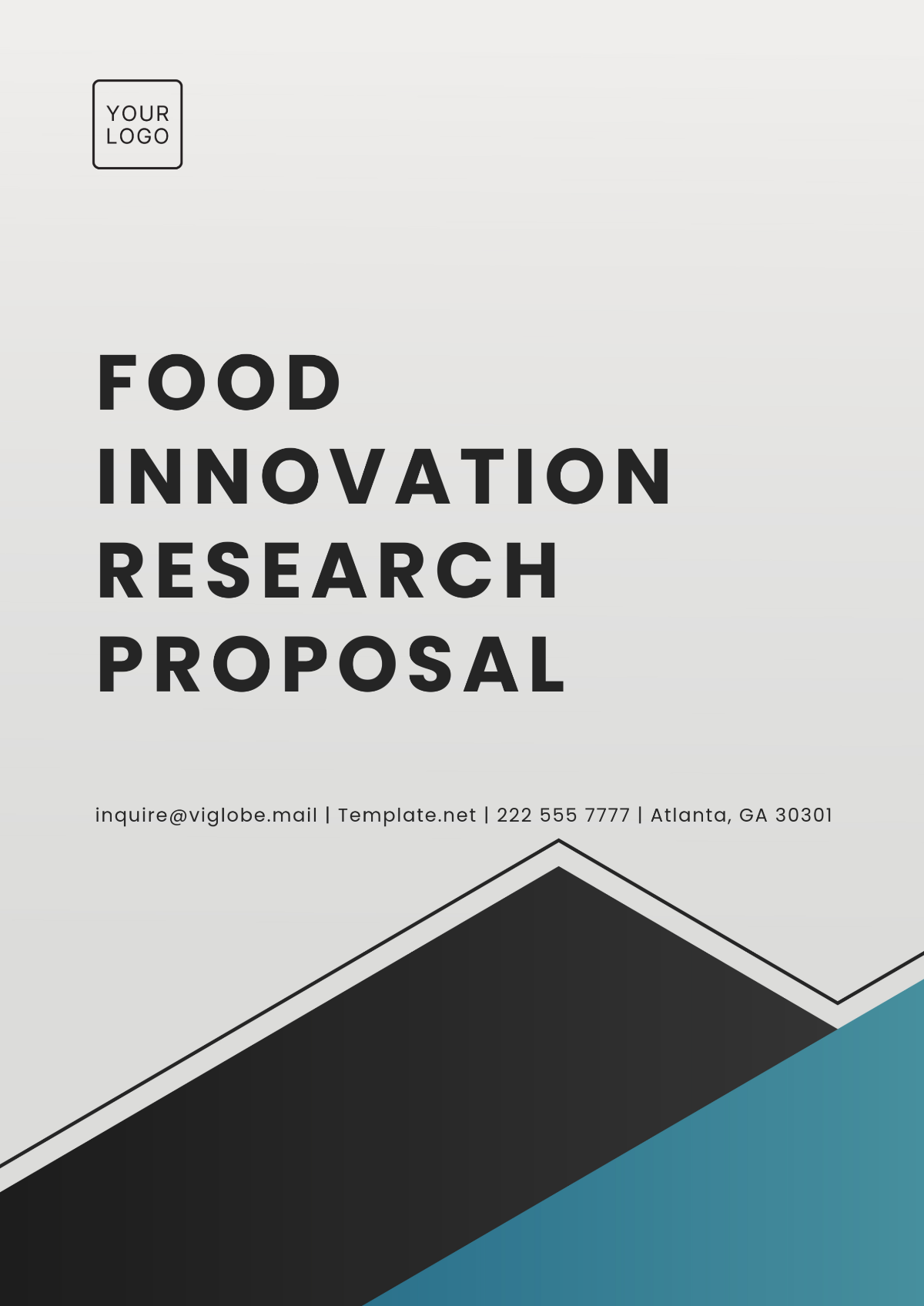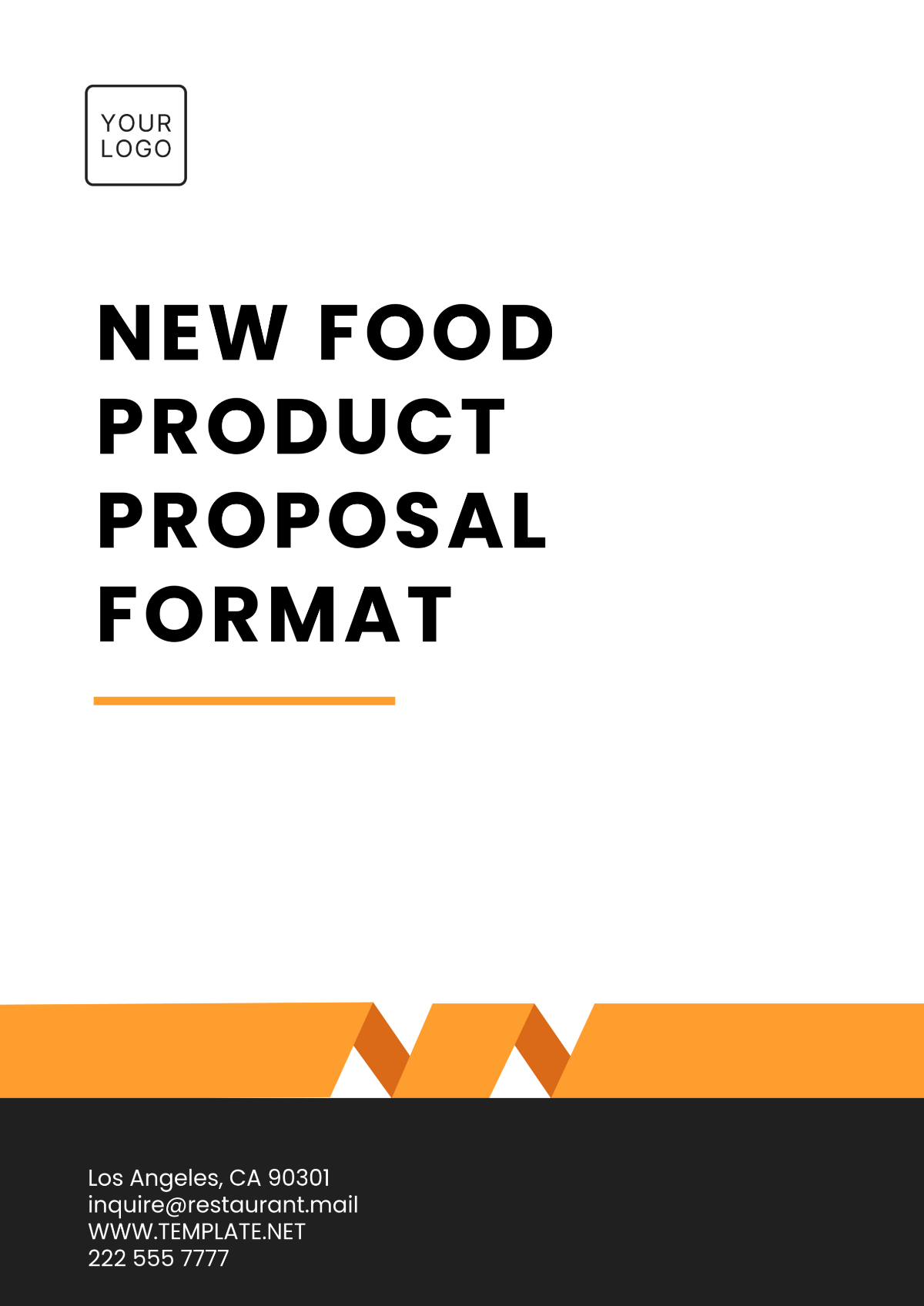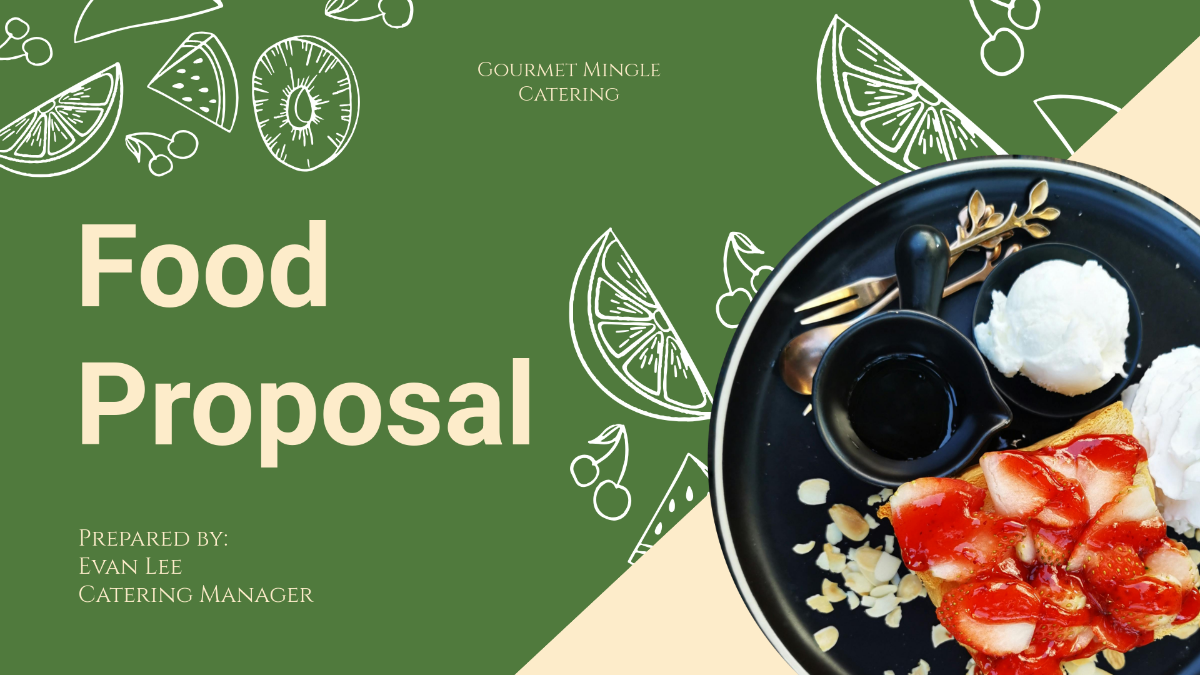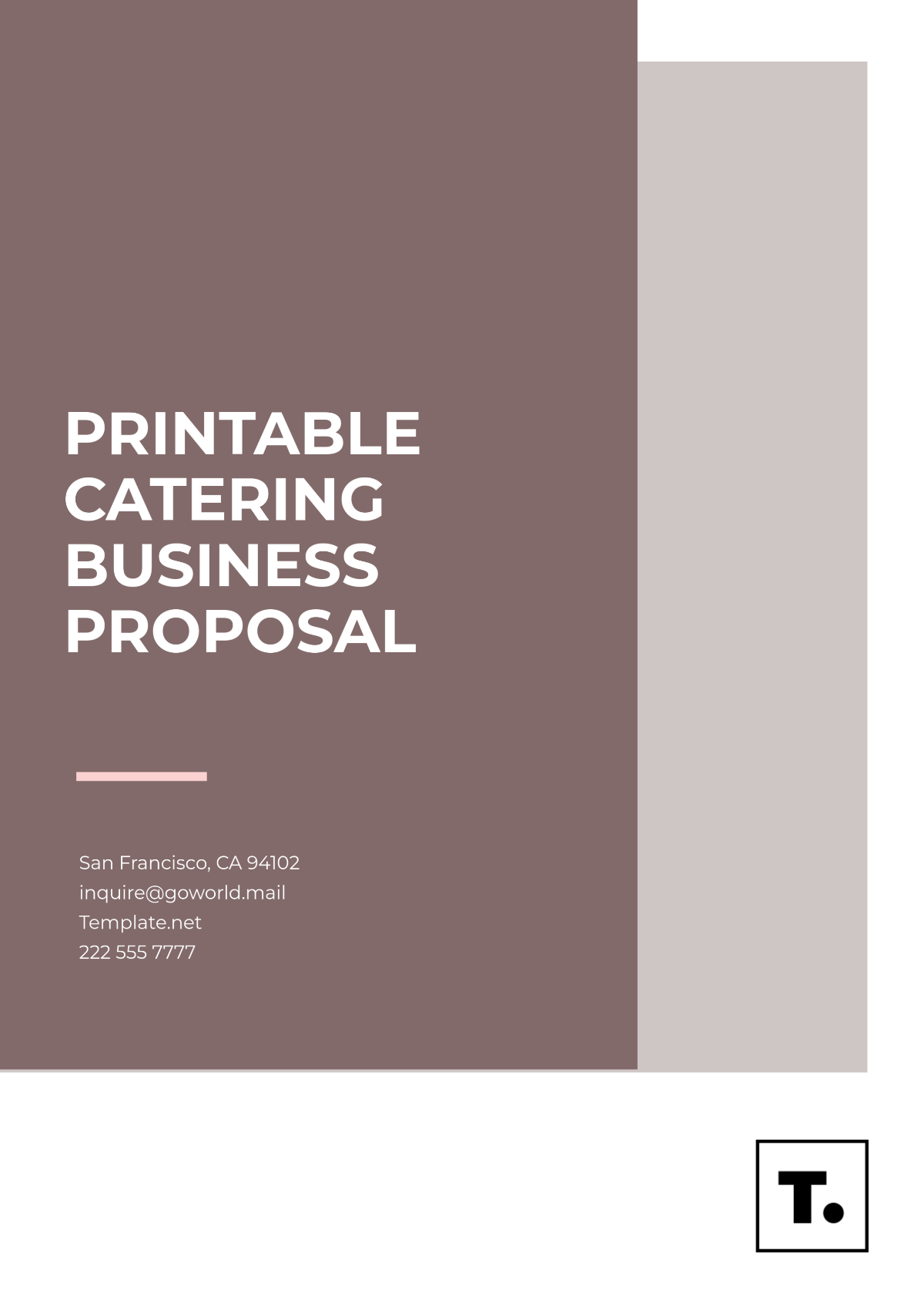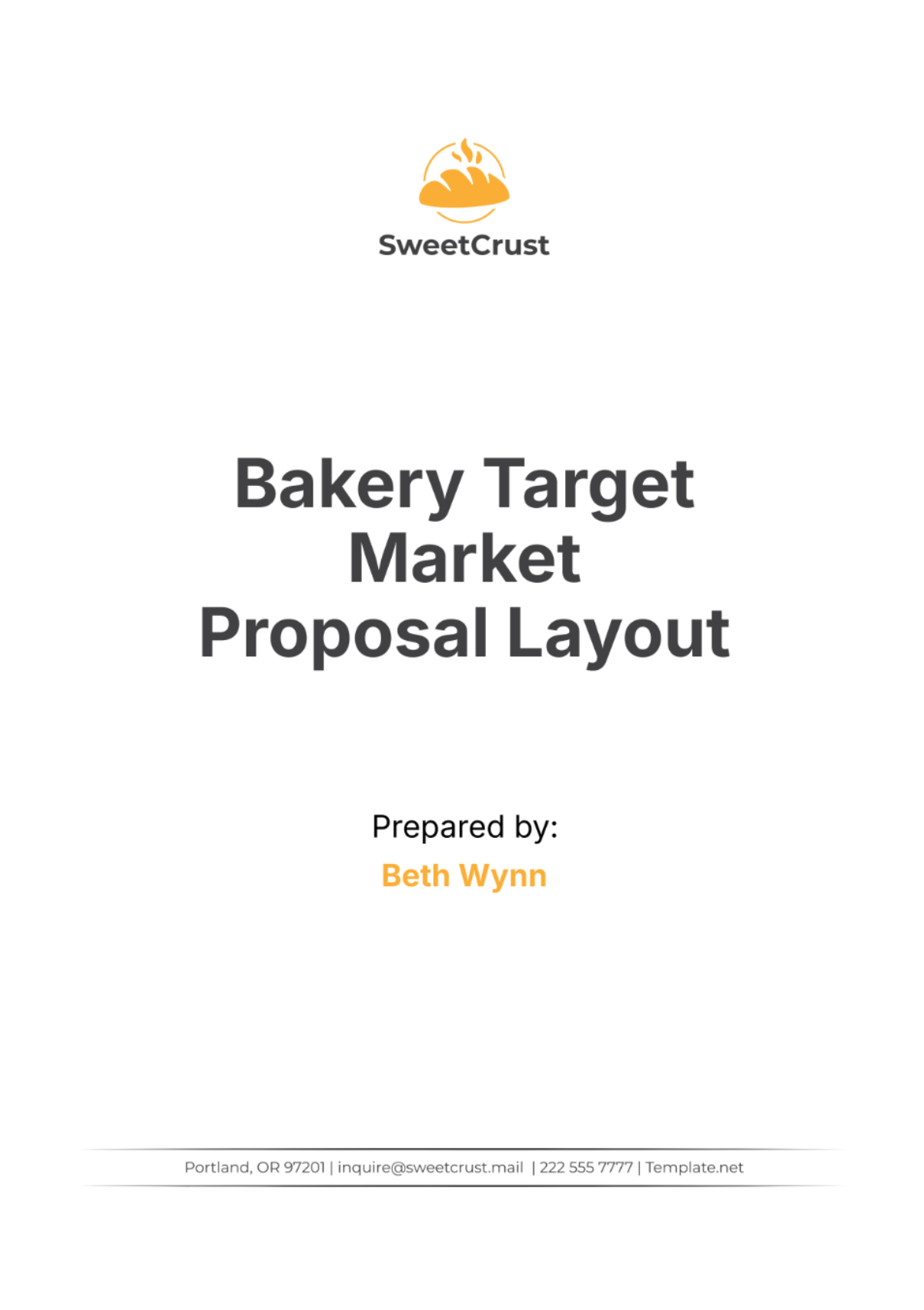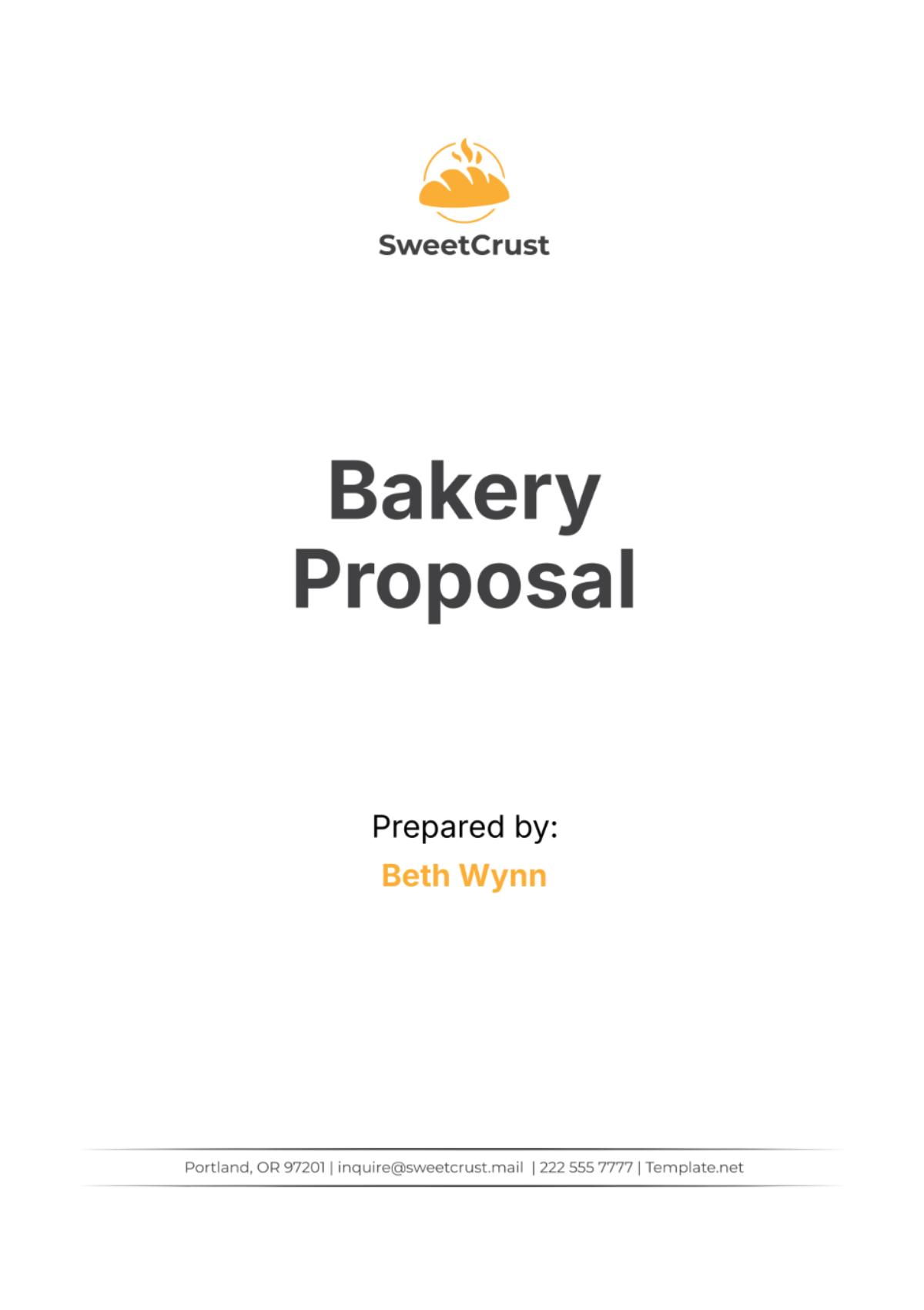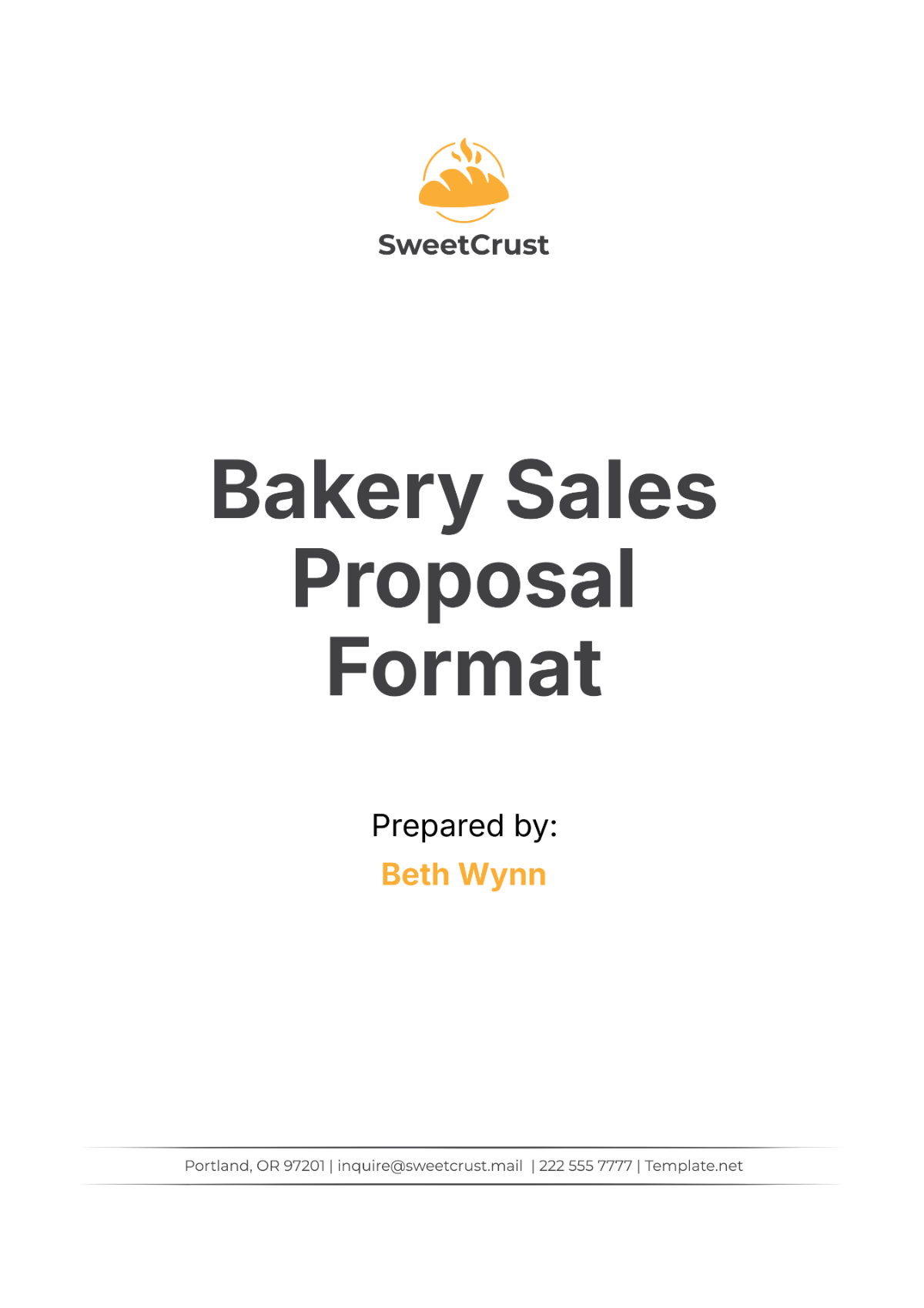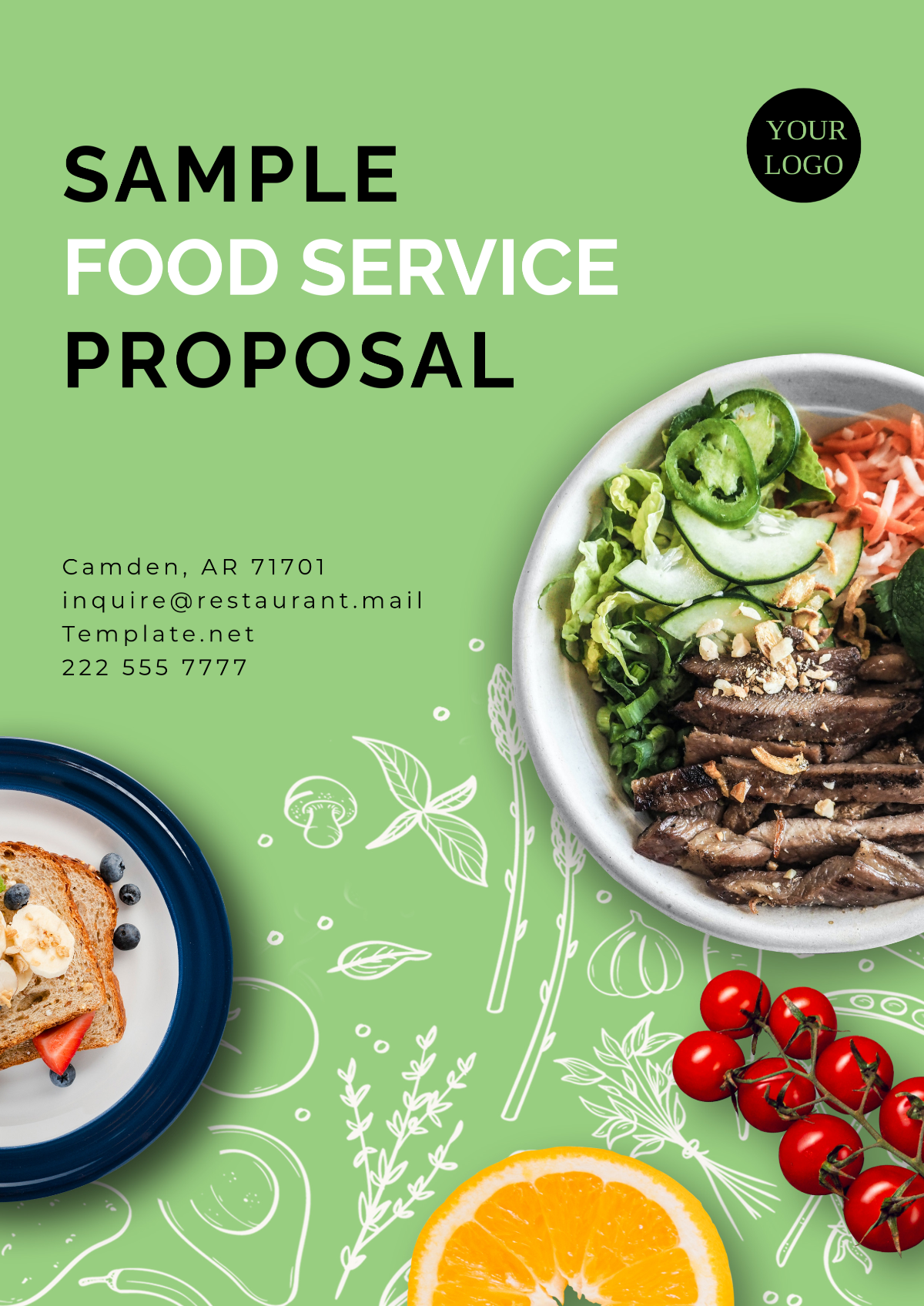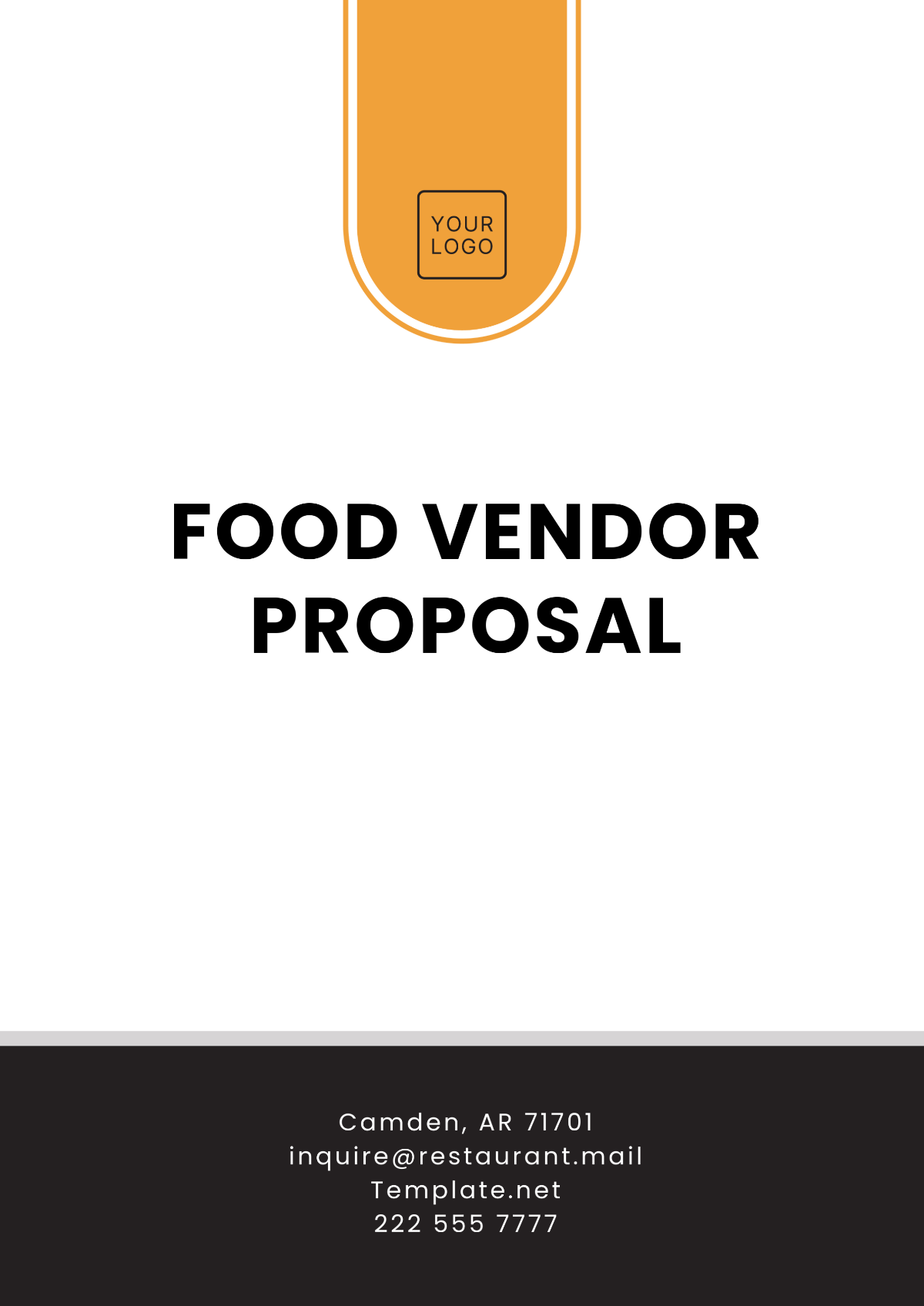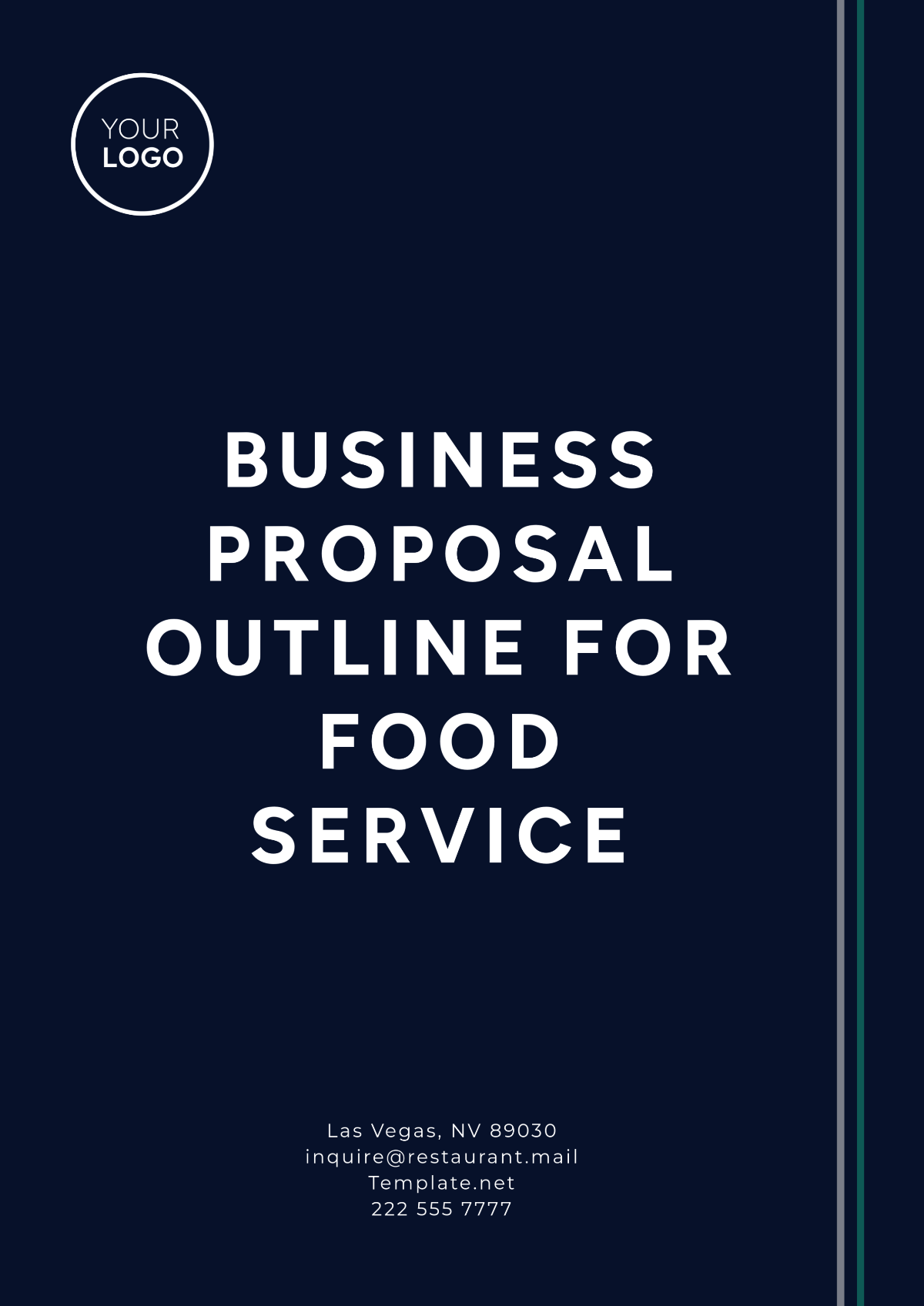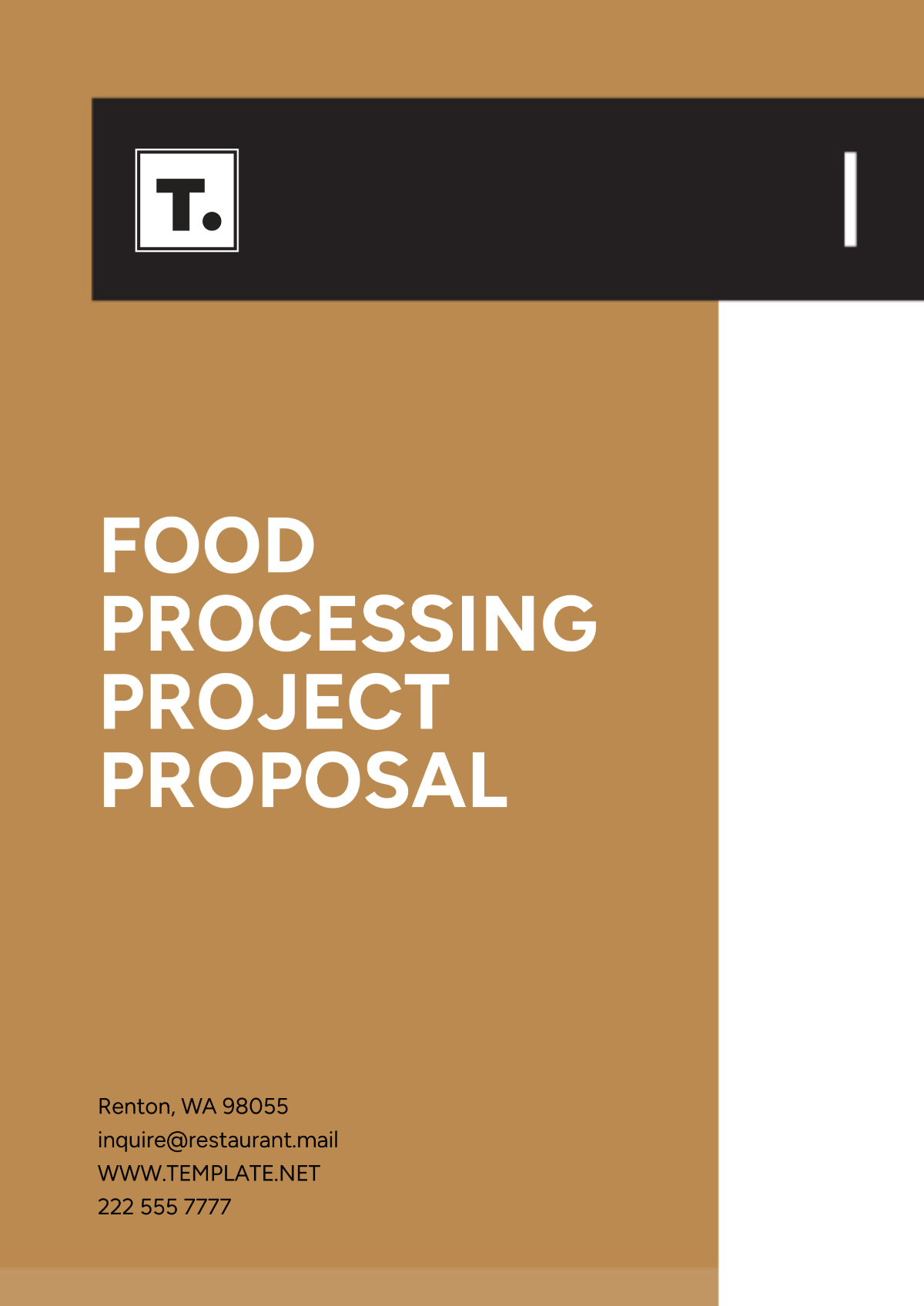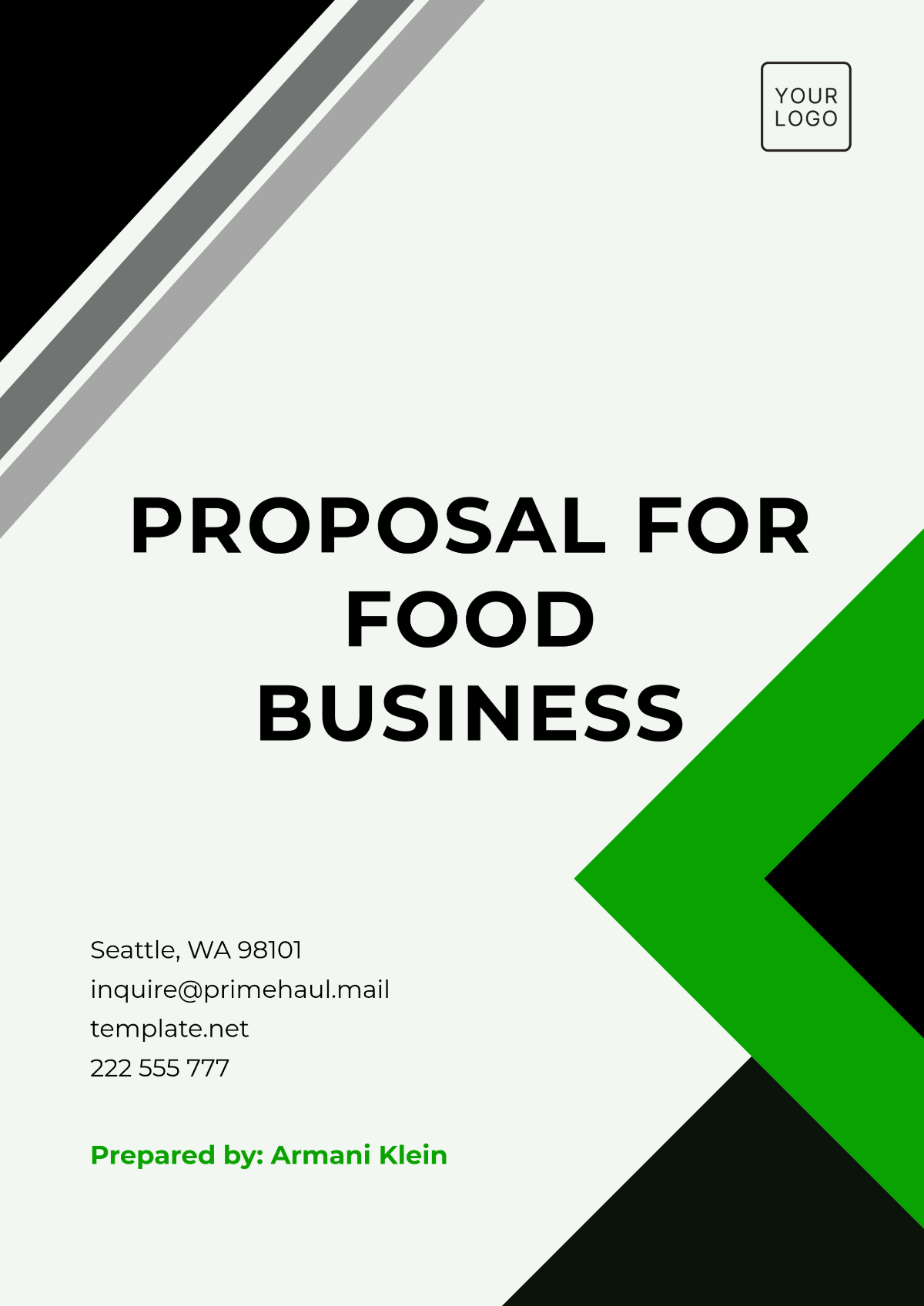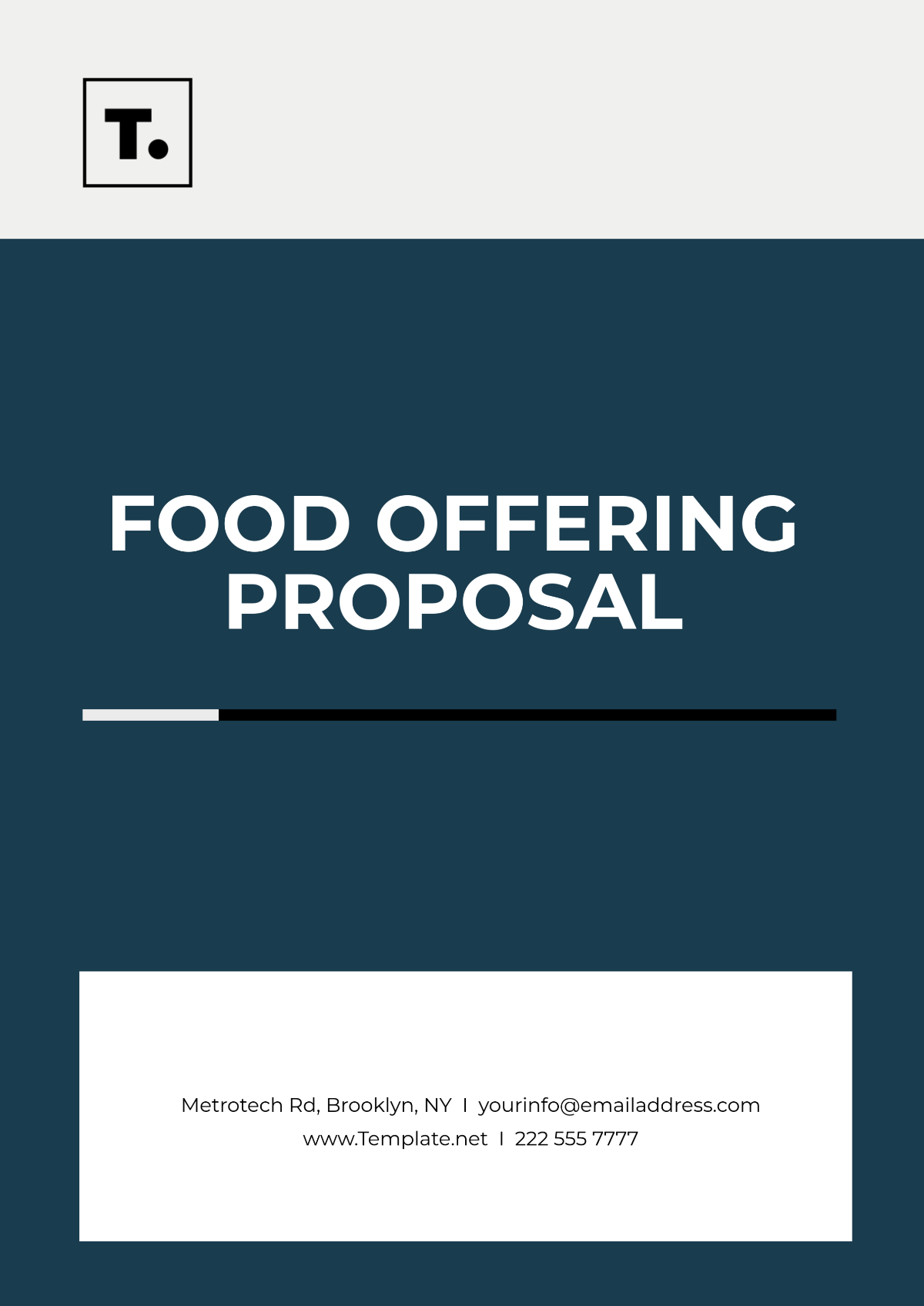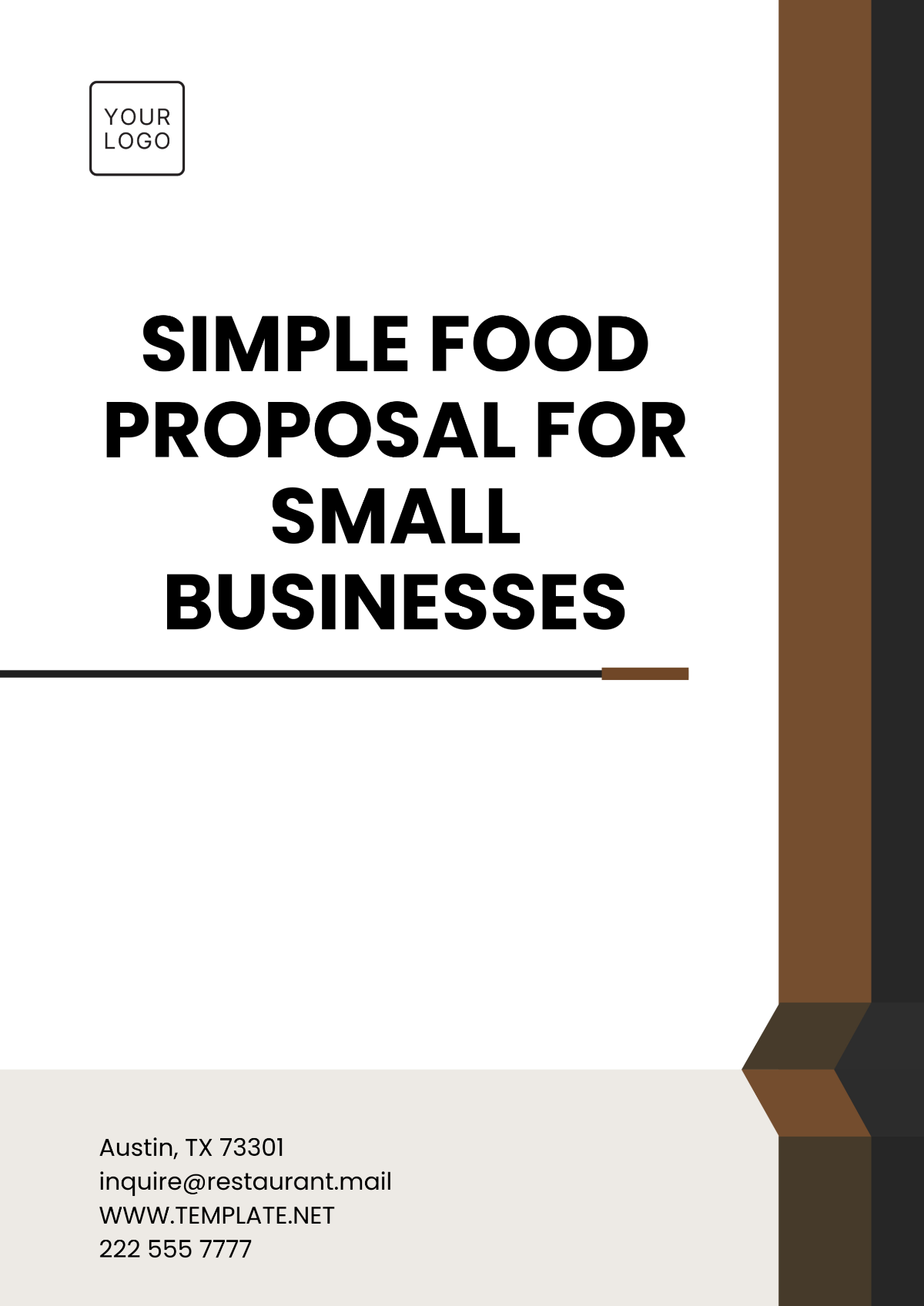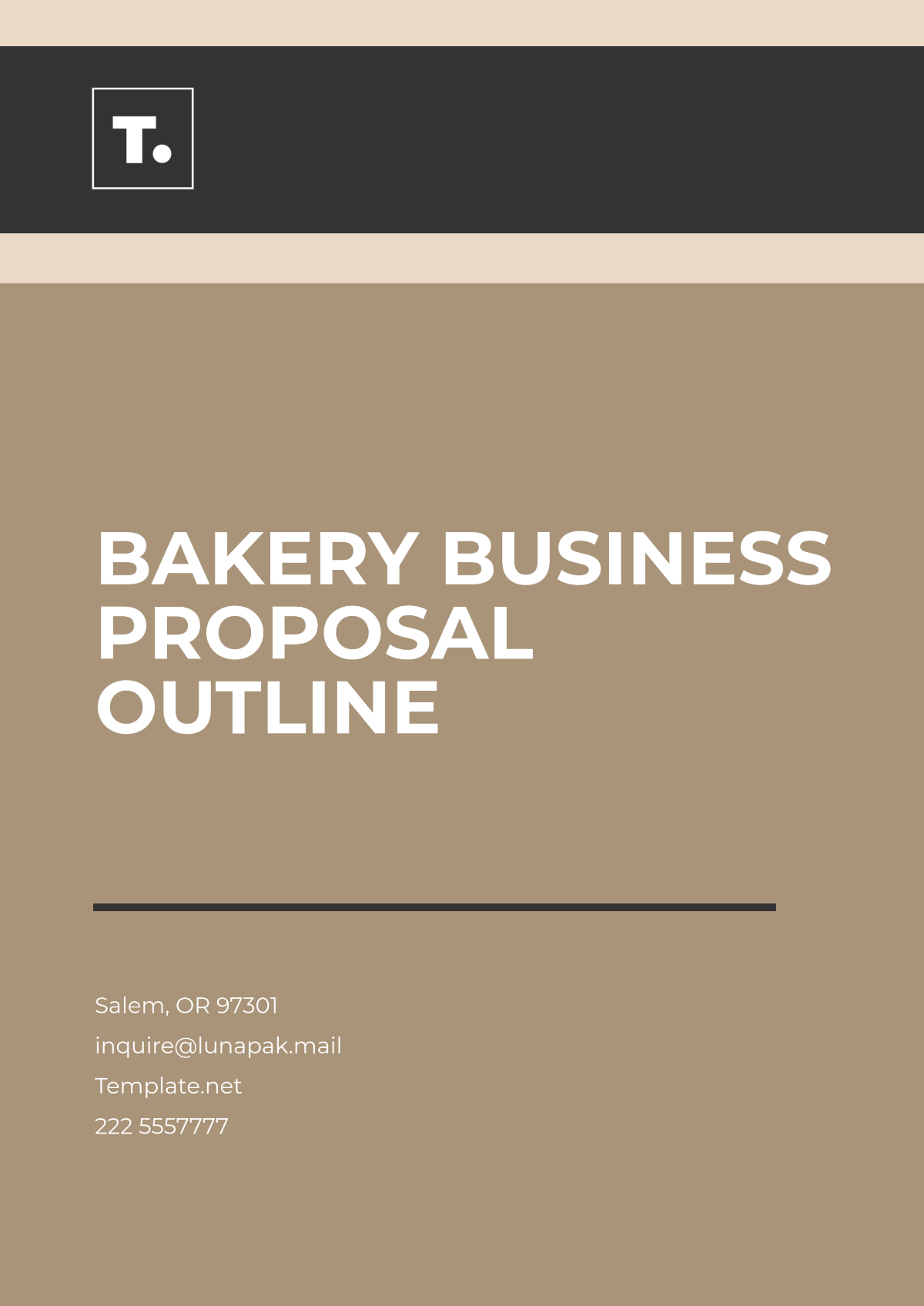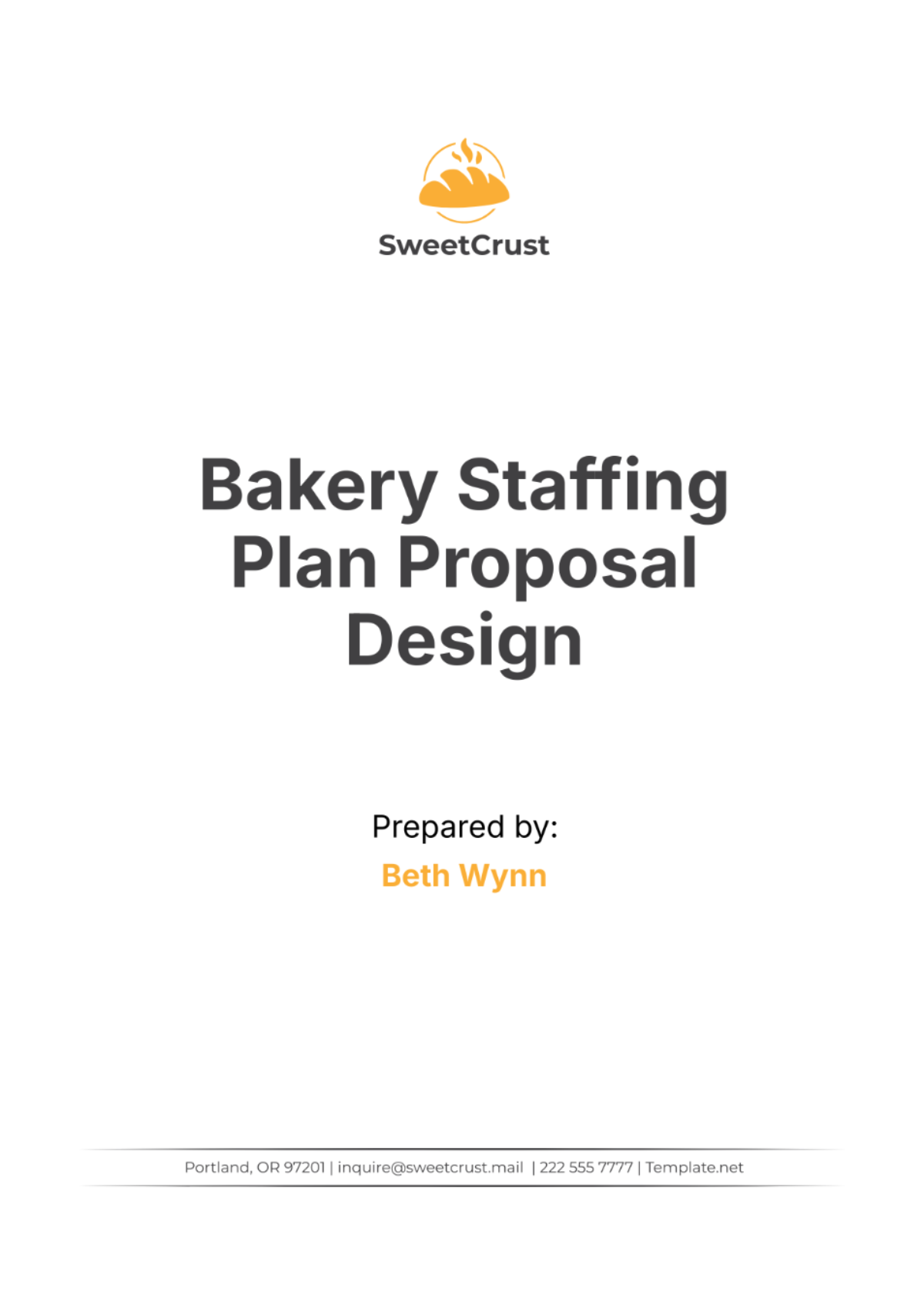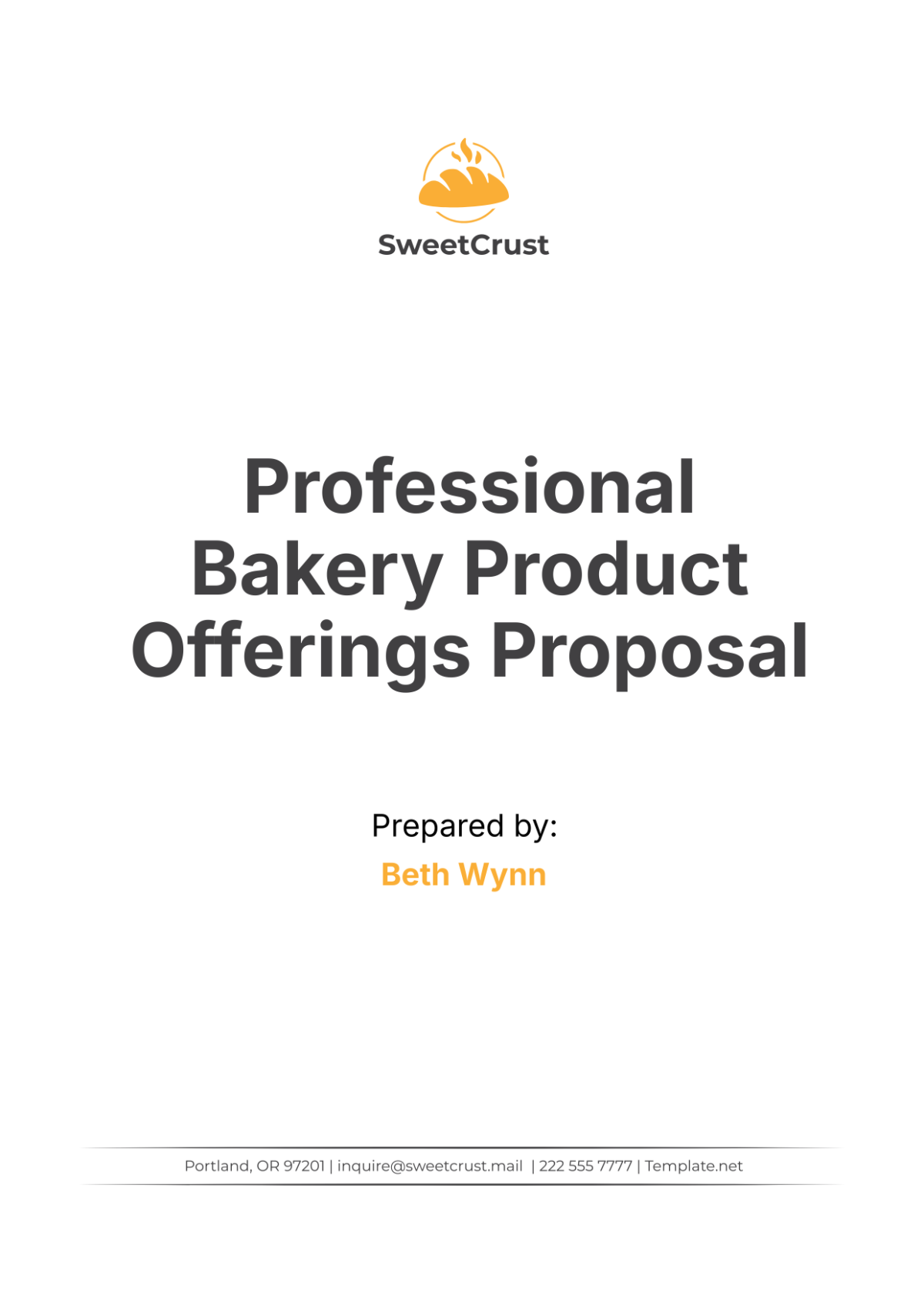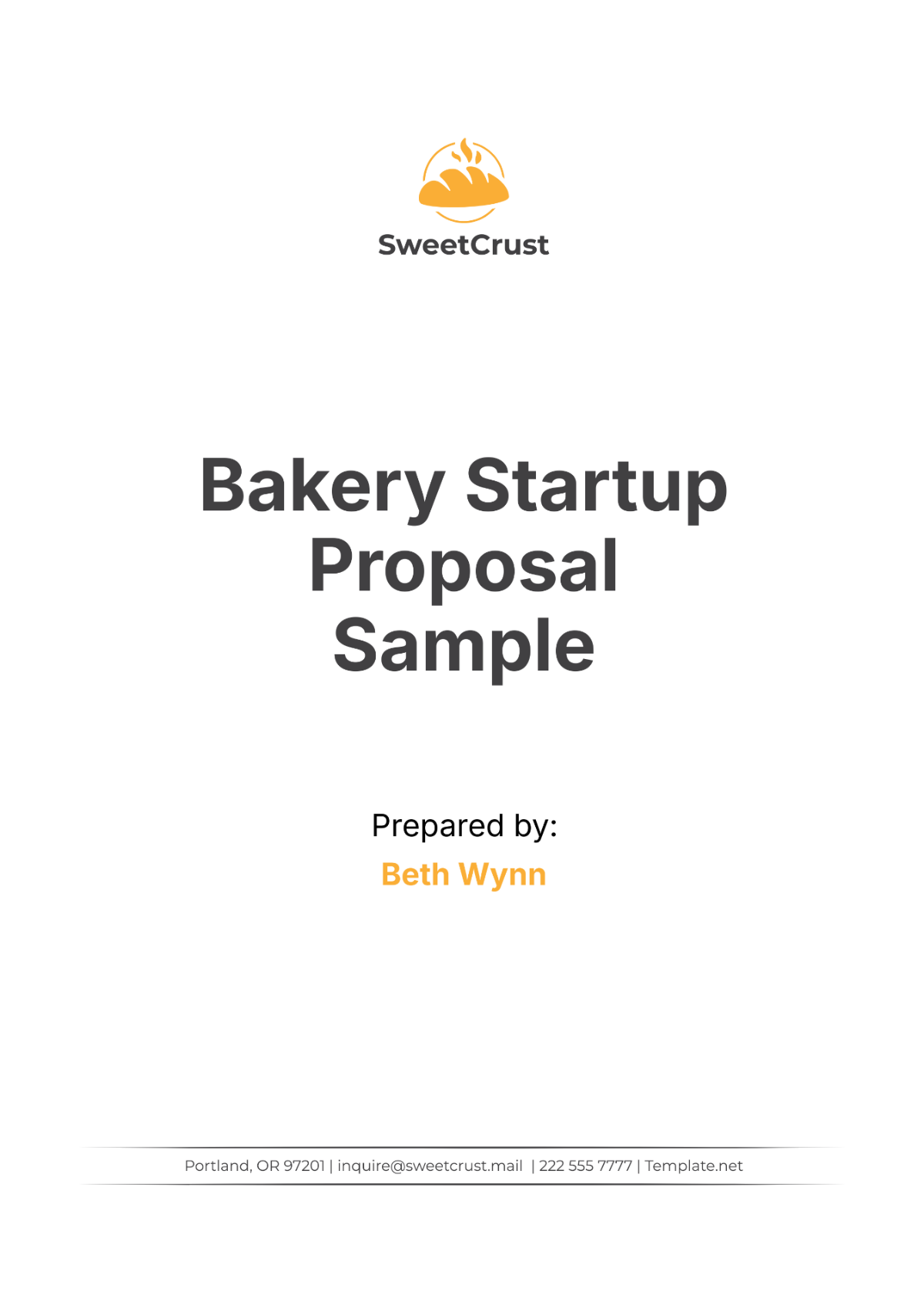Bakery Startup Proposal Sample
I. Executive Summary
The bakery industry offers a lucrative opportunity for entrepreneurs to capture a significant market share by meeting the growing demand for fresh, artisanal baked goods. We aim to establish a thriving bakery business, [Your Company Name] that capitalizes on the current trends in the food industry, including a preference for locally sourced, organic, and high-quality products. This Bakery Startup Proposal outlines our goal is to provide an extensive range of baked goods, including bread, pastries, cakes, and specialty items, that cater to diverse customer preferences.
Our financial projections indicate a promising return on investment, with anticipated first-year revenues of $500,000 and a net profit margin of 20%. We project an annual growth rate of 15% over the first five years, driven by strategic marketing initiatives, product diversification, and strong community engagement. Initial startup costs are estimated at $400,000, which will cover equipment, inventory, marketing, and initial operational expenses. We plan to secure funding through a combination of personal investment, bank loans, and potential investors.
The proposed bakery will be strategically located in a high-traffic area to maximize visibility and accessibility to our target market. Our marketing strategy focuses on establishing a strong brand presence through social media, local events, and partnerships with other businesses. With a dedicated team of skilled bakers and customer service professionals, [Your Company Name] is poised to deliver exceptional products and experiences that will attract a loyal customer base and position us as a leading bakery in the area.
II. Market Analysis
A. Industry Overview
Market Size and Growth: The global bakery industry is experiencing steady growth, with a market size of $600,000,000 in 2053. It is projected to reach $800,000,000 by 2057, driven by increasing consumer demand for convenience and artisanal products.
Trends and Opportunities: Key trends include a shift towards healthier options, such as whole-grain and gluten-free products, as well as an emphasis on sustainability and locally sourced ingredients. These trends present opportunities for [Your Company Name] to differentiate itself and capture a niche market.
Competitive Landscape: The bakery industry is highly competitive, with both large chains and independent bakeries vying for market share. However, there is significant potential for new entrants that can offer unique products and exceptional customer service.
B. Target Market
Demographic Profile: Our primary target market consists of health-conscious consumers aged 25-45 who prioritize quality and sustainability in their food choices. This demographic is willing to pay a premium for high-quality, artisanal products.
Geographic Area: [Your Company Name] will focus on a local market within a 10-mile radius of our bakery location. This area has a high concentration of our target demographic and limited competition from similar businesses.
Customer Needs and Preferences: Our target customers seek fresh, high-quality baked goods made with natural ingredients. They value convenience, variety, and exceptional customer service, which we aim to deliver consistently.
C. SWOT Analysis
Strengths: Our strengths include a strong commitment to quality, a diverse product offering, and a skilled team of bakers with extensive experience in the industry.
Weaknesses: Initial challenges may include limited brand recognition and higher operational costs due to our focus on premium ingredients and sustainable practices.
Opportunities: Opportunities for growth include expanding our product line to include health-focused options, leveraging social media for marketing, and forming partnerships with local businesses.
Threats: Potential threats include increased competition, economic downturns affecting consumer spending, and supply chain disruptions impacting ingredient availability.
III. Business Model
A. Revenue Streams
Retail Sales: The primary source of revenue will be from in-store sales of our baked goods. This includes daily bread, pastries, cakes, and specialty items that cater to a diverse customer base.
Online Sales: To expand our reach, we will offer an online ordering platform for customers to purchase our products for pickup or delivery. This will provide convenience and attract a wider audience.
Wholesale Accounts: Establishing wholesale accounts with local cafes, restaurants, and grocery stores will provide additional revenue streams and increase brand visibility.
B. Cost Structure
Fixed Costs: Fixed costs include rent, utilities, insurance, and salaries for our team members. These costs are essential for maintaining our operations and providing a stable foundation for growth.
Variable Costs: Variable costs include ingredients, packaging, and marketing expenses. These costs will fluctuate based on sales volume and market conditions, requiring careful management to maintain profitability.
Capital Expenditures: Initial capital expenditures include purchasing equipment, renovating the bakery space, and setting up our online sales platform. These investments are necessary for launching and scaling our business.
C. Key Partnerships
Local Suppliers: Partnering with local suppliers for ingredients will support our commitment to quality and sustainability while reducing transportation costs and supporting the local economy.
Community Organizations: Collaborating with community organizations for events and promotions will enhance our brand visibility and strengthen our ties to the local community.
Technology Providers: Working with technology providers for our online sales platform and inventory management system will streamline operations and improve customer experience.
IV. Marketing Strategy
A. Branding and Positioning
Brand Identity: Our brand identity will focus on quality, sustainability, and community engagement. This will be reflected in our logo, packaging, and marketing materials to create a cohesive and memorable brand experience.
Positioning Statement: "At [Your Company Name], we craft artisanal baked goods using locally sourced, natural ingredients to provide our customers with a taste of home."
Differentiation: Our commitment to quality and sustainability, along with our diverse product offering, will differentiate us from competitors and attract a loyal customer base.
B. Marketing Channels
Social Media: Utilizing platforms like Instagram, Facebook, and Twitter will help us reach a broad audience and engage with our target market through visually appealing content and promotions.
Local Events: Participating in local events and farmers' markets will increase our brand visibility and allow us to connect with potential customers directly.
Email Marketing: Building an email list and sending regular newsletters will keep our customers informed about new products, promotions, and events, encouraging repeat business.
C. Sales Strategy
Customer Experience: Providing an exceptional customer experience is a top priority, with a focus on friendly service, product knowledge, and a welcoming atmosphere.
Promotions and Discounts: Offering promotions and discounts during the initial launch phase will attract new customers and encourage trial purchases of our products.
Loyalty Program: Implementing a loyalty program will incentivize repeat business and build long-term customer relationships by rewarding frequent purchases.
V. Financial Projections
A. Revenue
The following chart and table outline our projected revenue for the first three years of operation. These projections are based on our anticipated sales volume, cost structure, and growth rate.
Category | Year 1 | Year 2 | Year 3 |
|---|---|---|---|
Revenue | $500,000 | $575,000 | $661,250 |
Year 1: We anticipate generating $500,000 in revenue during our first year of operation, driven by strong in-store sales and online orders. Our marketing efforts and community engagement will play a key role in attracting customers and building brand awareness.
Year 2: Revenue is projected to grow to $575,000 in the second year, with a focus on expanding our product offerings and increasing our wholesale accounts. Continued investment in marketing and promotions will support this growth.
Year 3: By the third year, revenue is expected to reach $661,250, reflecting ongoing efforts to enhance our product line and customer experience. This growth will be supported by an expanded customer base and increased brand loyalty.
B. Initial Costs
The following chart and table outline the initial costs associated with launching [Your Company Name], including equipment, renovations, and marketing:
Cost Category | Amount |
|---|---|
Equipment | $110,000 |
Renovations | $150,000 |
Initial Inventory | $30,000 |
Licensing and Permits | $10,000 |
Initial Marketing | $20,000 |
Working Capital | $80,000 |
Total Initial Costs | $400,000 |
Equipment: The investment in equipment includes purchasing commercial ovens, mixers, display cases, and other essential tools required for bakery operations. This $110,000 investment is crucial for efficient production and maintaining high product quality.
Renovations: Renovations involve transforming the bakery space into a welcoming and functional environment for both customers and staff. The $150,000 budget covers interior design, signage, and installation of necessary fixtures to enhance the customer experience.
Initial Inventory: The initial inventory cost of $30,000 covers the purchase of raw materials, such as flour, sugar, and other ingredients needed for the first few weeks of operation. It also includes packaging materials and other supplies necessary for launching the business.
Licensing and Permits: Licensing and permits costs ensure compliance with local regulations, including health and safety permits, business licenses, and other necessary certifications. The $10,000 allocated for securing these permits is essential for legal operation and maintaining public trust.
Initial Marketing: Initial marketing expenses include the development of branding materials, advertising campaigns, and promotional activities to create awareness and attract customers. This $20,000 investment will help establish a strong brand presence in the community.
Working Capital: Working capital provides the financial cushion needed to cover operational expenses during the initial months of operation. The $80,000 ensures the bakery can meet its financial obligations while building a steady revenue stream.
VI. Operations Plan
A. Location and Facilities
Bakery Location: [Your Company Name] will be located in a high-traffic area with ample foot traffic and visibility. This location will maximize customer accessibility and brand exposure.
Facility Layout: The bakery will feature a welcoming storefront with a display area for our products, a production kitchen equipped with state-of-the-art baking equipment, and a comfortable seating area for customers.
Renovations and Setup: Initial renovations will focus on creating an inviting and efficient space for both customers and staff, including the installation of necessary equipment and fixtures.
B. Production Process
Baking Schedule: Our baking schedule will be designed to ensure a consistent supply of fresh products throughout the day, with multiple baking cycles to meet customer demand.
Quality Control: Stringent quality control measures will be implemented to ensure that all products meet our high standards for taste, texture, and appearance.
Ingredient Sourcing: We will source high-quality ingredients from local suppliers to ensure freshness and support our commitment to sustainability.
C. Staffing Plan
Staffing Levels: Our initial staffing plan includes a team of experienced bakers, customer service representatives, and management personnel to oversee daily operations.
Training and Development: Comprehensive training programs will be implemented to ensure that all staff are equipped with the skills and knowledge necessary to deliver exceptional products and service.
Employee Retention: We will prioritize employee retention through competitive compensation, benefits, and opportunities for growth and advancement.
VII. Management Team
A. Leadership Structure
Management Roles: The management team will consist of experienced professionals with expertise in bakery operations, marketing, finance, and customer service. Each team member will play a critical role in guiding the business and ensuring its success.
Decision-Making Process: A collaborative decision-making process will be implemented to leverage the diverse skills and perspectives of the management team, ensuring well-informed and strategic business decisions.
Accountability and Performance: Clear accountability and performance metrics will be established to monitor progress and ensure that all team members are aligned with the company's goals and objectives.
B. Key Team Members
Founder and CEO: The founder and CEO will provide strategic vision and leadership, overseeing all aspects of the business and ensuring alignment with the company's mission and goals.
Head Baker: The head baker will be responsible for product development, production management, and quality control, ensuring that all products meet our high standards.
Marketing Director: The marketing director will lead our marketing efforts, developing and executing strategies to build brand awareness, attract customers, and drive sales.
C. Advisory Board
Industry Experts: An advisory board of industry experts will provide guidance and support on key business decisions, leveraging their experience and knowledge to enhance our operations and strategy.
Mentorship Opportunities: Mentorship opportunities will be sought with successful entrepreneurs and business leaders who can provide valuable insights and advice on growing and scaling the business.
Networking and Partnerships: The advisory board will assist in building strategic partnerships and expanding our network within the industry, supporting our growth objectives.
VIII. Risk Management
A. Potential Risks
Market Competition: Increased competition from both established bakeries and new entrants poses a risk to market share and profitability. Staying ahead through innovation and quality is essential.
Economic Downturns: Economic downturns can impact consumer spending, affecting sales and revenue. Diversifying our product offerings and revenue streams can mitigate this risk.
Supply Chain Disruptions: Disruptions in the supply chain can affect ingredient availability and costs. Building strong relationships with suppliers and maintaining a diversified supply chain can help manage this risk.
B. Mitigation Strategies
Innovation and Product Development: Continuously innovating and developing new products will help differentiate us from competitors and attract a loyal customer base.
Financial Management: Implementing robust financial management practices will ensure that we maintain a strong cash flow and manage costs effectively.
Crisis Management Plan: Developing a comprehensive crisis management plan will prepare us for unforeseen events and ensure that we can respond effectively to minimize disruptions.
C. Contingency Plans
Emergency Fund: Establishing an emergency fund will provide a financial buffer to address unexpected expenses or revenue shortfalls.
Alternative Suppliers: Identifying alternative suppliers will ensure that we can maintain ingredient availability in the event of supply chain disruptions.
Business Continuity Plan: Developing a business continuity plan will ensure that we can maintain operations and service delivery during emergencies or disruptions.
IX. Conclusion
[Your Company Name] is poised to capitalize on the growing demand for high-quality, artisanal baked goods. Our Bakery Startup Proposal outlines a clear path to success, supported by strategic marketing initiatives, efficient operations, and a skilled management team. By focusing on quality, sustainability, and customer satisfaction, we are confident in our ability to build a thriving bakery business that meets the needs of our target market.
We invite potential investors and stakeholders to join us in this exciting venture, as we work to establish [Your Company Name] as a leading bakery in the industry. With a strong foundation, innovative products, and a commitment to excellence, we are well-positioned to achieve our business goals and deliver exceptional value to our customers and community.

